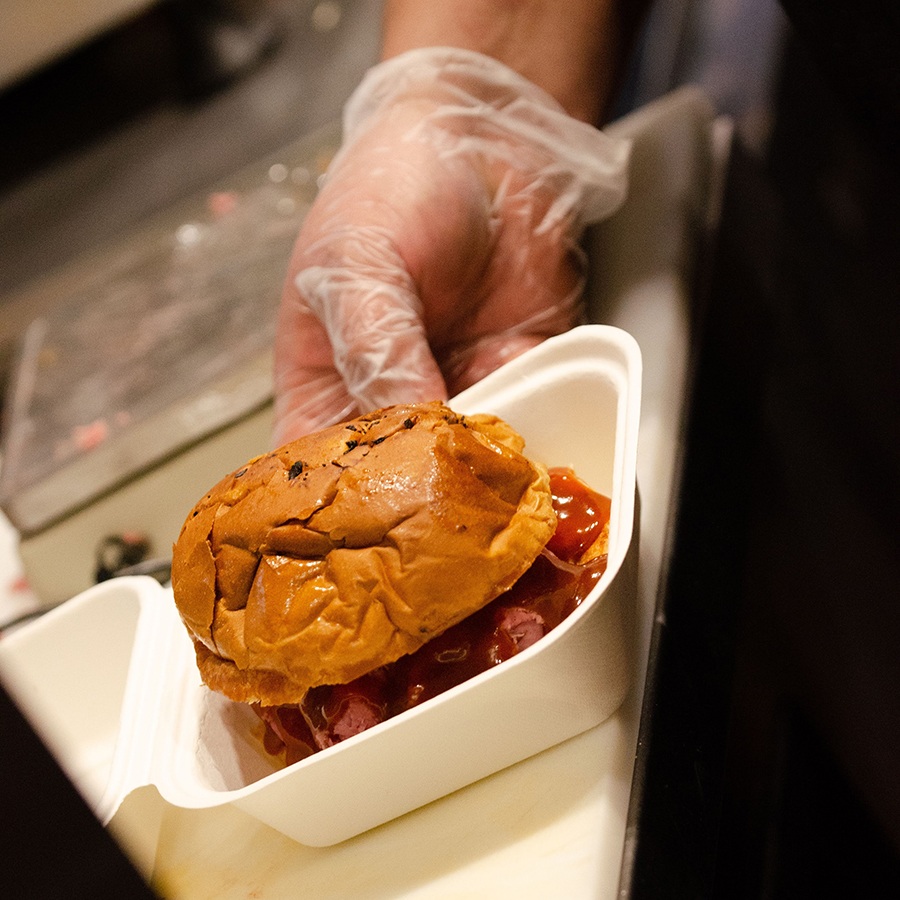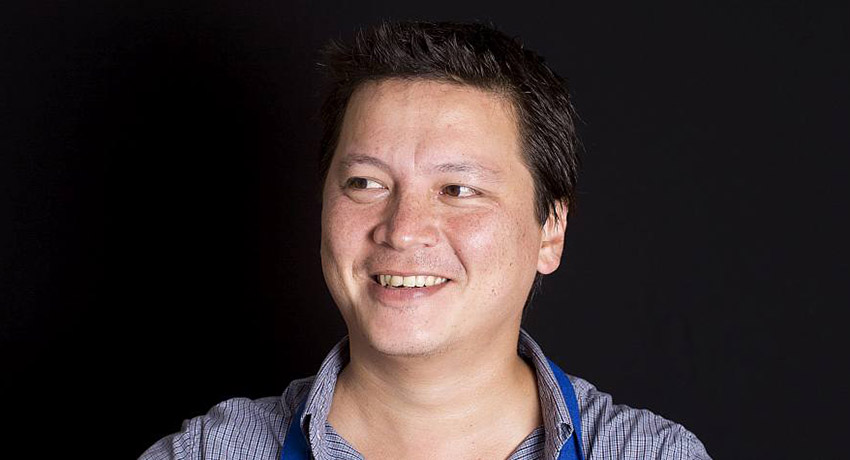What You Need to Know about How to Safely Order Takeout Right Now
Here are five takeaways on food safety during the coronavirus pandemic from former Bostonian, chef, and Serious Eats creator J. Kenji López-Alt.

An employee at Hot Box at Bow Market prepares a roast beef sandwich for takeout. / Photo courtesy of Hot Box
Even as Gov. Charlie Baker has had to restrict access to public beaches and parks in order to enforce social distancing, restaurants are still considered essential businesses. In fact, the governor just allowed certain restaurants to expand their offerings to include wine and beer to-go. But, if we shouldn’t even meet up with friends to kick a soccer ball around right now, is it really a safe idea to visit a local restaurant and bring food home to eat?
According to food expert J. Kenji López-Alt, yes, it is, considering the best advice of virologists right now.
A Cambridge native, restaurant-trained chef, and former editor at Boston’s Cook’s Illustrated magazine, López-Alt is a founding editor at Serious Eats, creator of its wonky cooking blog, the Food Lab; and a James Beard Award-winning cookbook author. Now raising a young daughter with his family in California, López-Alt is the chief culinary consultant at Serious Eats, and chef-owner of Wursthall in San Mateo—so food safety is kind of his thing.

J. Kenji Lopez-Alt. / Photo provided
López-Alt and Serious Eats recently published a thorough guide to food safety and coronavirus, based on dozens of articles, scientific reports, and expert interviews. The report is certainly worth a full read, but for anyone simply wondering if picking up takeout, ordering delivery, and supporting local restaurants right now is a safe idea, here are five important takeaways you should know.
The likelihood of contracting COVID-19 by touching contaminated objects is a small risk that’s easily avoided with proper hand-washing. Breathing in virus-carrying droplets of saliva or mucus is the main way to spread COVID-19, because it’s a respiratory virus. SARS-CoV-2—the coronavirus that causes COVID-19—can remain on cardboard surfaces, like a takeout bag, for up to 24 hours, and on stainless steel or plastic surfaces, such as to-go-containers, for up to three days. We can minimize the risk by transferring takeout food and other goods to clean containers, López-Alt says, whether we picked it up, it was delivered to our door, or we bought at the store; and by washing our hands thoroughly afterwards. “You can also set aside packages and shelf-stable groceries in a garage or spare room for a few days to allow any potential viral contamination to fade and effectively take already-small odds and reduce them even closer to zero,” Lopez-Alt writes.
Eating has never been linked to contracting a coronavirus like COVID-19. That’s because respiratory viruses develop in the respiratory tract, which is different from the digestive tract. Plus: Our saliva contains chemicals that help break down not only the proteins we consume in our food, but also the proteins comprising pathogens. Additionally, physically chewing and swallowing minimizes the amount of time that any potentially infectious viral load spends in contact with potentially infectable cells—we put food in our mouths, not up our noses, after all.
The coronavirus is unlikely to spread even if a food handler hypothetically sneezed directly onto your raw salad, or while preparing a burger that you’ll eat with your hands. “As gross as it is, it’s unlikely to get you sick,” López-Alt says. Those germs are too far removed from the initial viral load, experts told him. Using clean silverware, avoiding touching other parts of your face while you’re eating, and washing your hands after eating (and before touching your face) are easy ways to further minimize the risk of getting sick from viral droplets that might be on the food you eat. Experts also believe that heating food back up to 149 degrees Fahrenheit will sterilize it.
Food handlers are specifically trained in proper safety and hygiene procedures. Here are food safety resources for the Commonwealth of Massachusetts.
The main risk factor is proximity to other people, so picking up food is a higher risk than having it delivered or cooking for yourself. When considering where to place an order for pickup, call the restaurant and ask if they offer curbside pickup, where an employee will deliver right to your car. Other restaurants have set up walkup windows, so customers do not have to enter the establishment to pick up their food. “The cook at your local restaurant most likely follows stricter hygiene and safety protocols than the supermarket worker stocking the shelves,” López-Alt notes, so buying food comes with its own risks. “A good rule of thumb is to treat anything that comes into your home from outside, whether food, mail, or other people, as potentially contaminated and act accordingly. Wash your hands after bringing it home, transfer to clean containers and/or sanitize packaging when possible, and wash your hands before, during, and after cooking. (And stop picking your nose.)”


